Model Of Canoe & Paddles Item Number: E2583-0 from the National Museum of Natural History
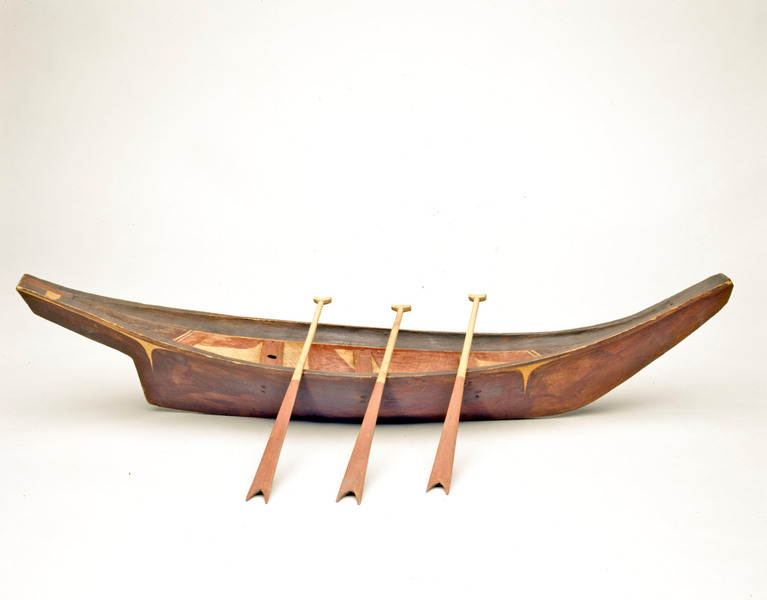





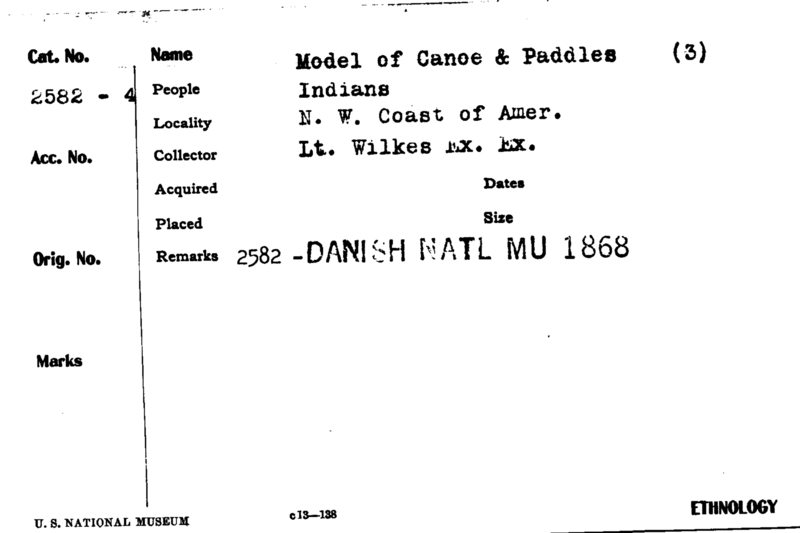
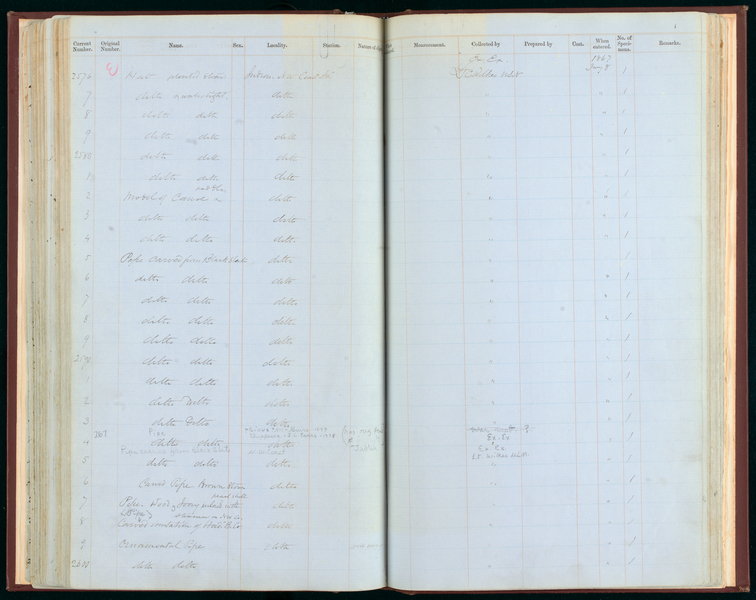
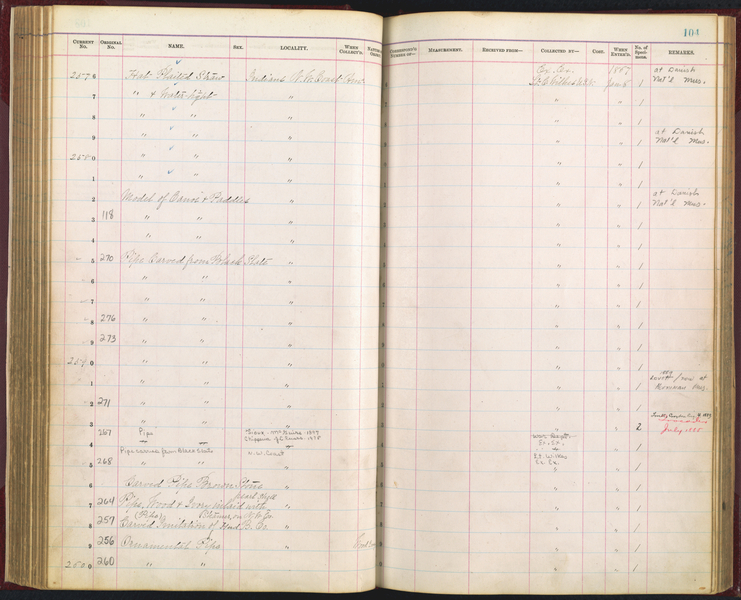
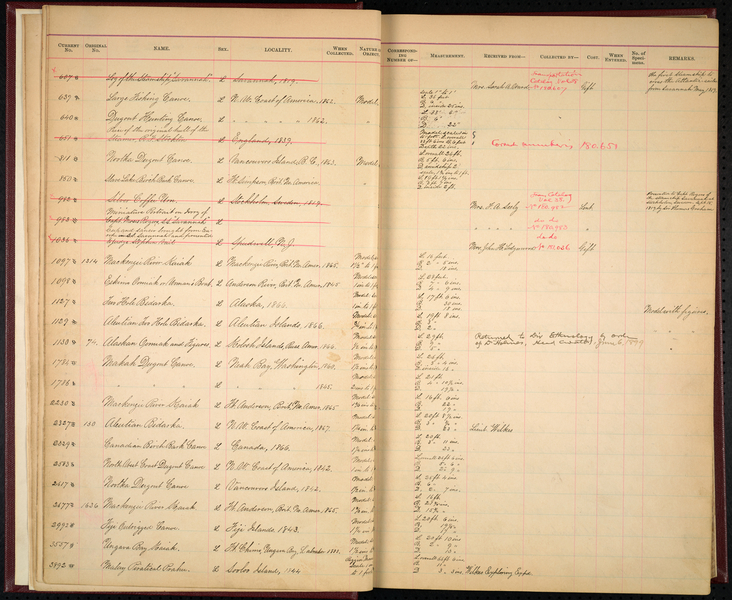
Notes
This canoe model is described in Collins Boat Ms. p. 915: "Northwest Coast dugout canoe. Used by Indians in the Northwest Coast of America for travelling, hunting, fishing, etc.. ... An open keeless dugout; painted; sharp, high, projecting ends; round bilge; narrow, flat floor; much sheer on top; three thwarts, forward one with mast-hole; two paddles, with spear-shaped blades and cross-bar handles. ... Paddles missing ... Apl 20 [18]99.""OREGON. R. R. W[aldron]" IS WRITTEN ON THE ARTIFACT. HAS ORIGINAL PEALE # LABEL.Note: Neg. #s 2002-12257 and 2002-12296 are photos of this canoe model with paddle models Catalogue # E642. Illus. p. 257 and described on p. 257 and p. 383 of Gilman, Carolyn. 2003. Lewis and Clark across the divide. Washington, D.C.: Smithsonian Books. Identified there as Lower Columbia River type.Note: There is some question as to whether the two paddles currently numbered E1871-0 actually belong with E1871-0. They are both numbered 1871 in old handwriting, but the larger paddle is also marked "Oregon by R. R. Waldron Ex. Ex. b.17", which would imply it was from the U.S. Exploring Expedition, Accession No. 66A00050. If the paddles are from the Exploring Expedition, one possible catalogue number might be E2583-0?, which is supposed to have paddles, according to the catalogue, but currently those have not been located.Provenience note, in 1841 Oregon Territory encompassed the land from Russian Alaska to Spanish California and from the Pacific to the Continental Divide. The U.S. Exploring Expedition reached Oregon Territory in 1841, and carried out a hydrographic survey of the Columbia River from its mouth to the Cascades, as well as doing some surveying inland.They also had dealings with Hudson's Bay Company staff during that time, and it is probable that the HBC is the source of a number of the Northwest Coast artifacts collected by the expedition.
Item History
- Made in Oregon, USA
- Collected by Lt. Richard R. Waldron in Oregon, USA between 1838 and 1842
- Received from United States Exploring Expedition during 1858
What
- Name
- Model Of Canoe & Paddles
- Identification Number
- E2583-0
- Type of Item
- canoe model
Who
- Culture
- Indian
- Field Collector
- Lt. Richard R. Waldron
- Received from
- United States Exploring Expedition
Where
- Holding Institution
- National Museum of Natural History
- Made in
- Oregon, USA
- Collected in
- Oregon, USA
When
- Collection Date
- between 1838 and 1842
- Acquisition Date
- during 1858
Other
- Accession Number
- 66A00050